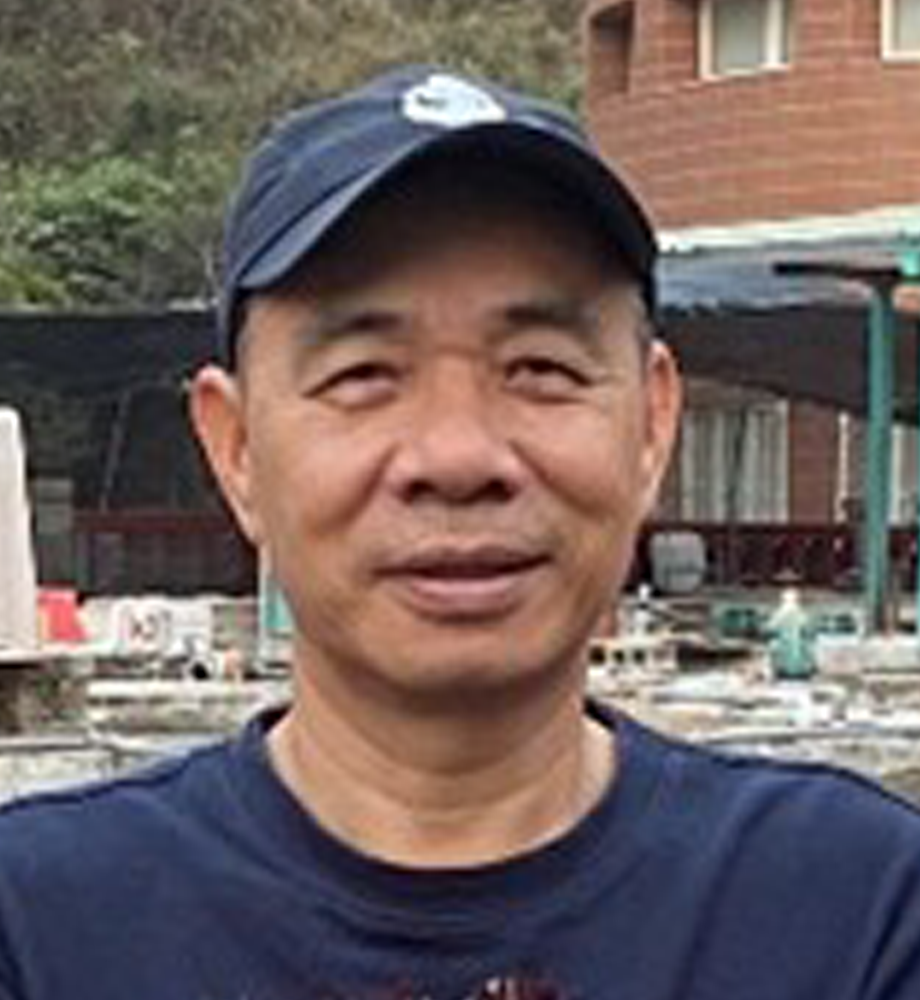

Hung, Chin-Chang洪慶章
Joint Appointment Research Fellow
Research Interests
Research interests include Marine Chemistry, Marine Carbon Cycling , Marine Radiochemistry, Marine Environmental Organic Chemistry, Ecological Aquaculture.
Representative Publications
Hung C.-C., H.-H. Hsieh, W.-C. Chou, E.-C. Liu, C.H. Chow, Y. Chang, T.-M. Lee, P.H. Santschi, R.R.M.K.P. Ranatunga, H.P. Bacosa, Y.-Y. Shih* (2024) Assessing CO2 sources and sinks in and around Taiwan: Implication for achieving regional carbon neutrality by 2050. Marine Pollution Bulletin, accepted.
Lin, T.-Y., C.-L. Chen , Y.-Y. Shih , H.-H. Hsieh , W.-J. Huang , P. H. Santschi and C.-C. Hung* (2023) A Smallholders’ Mariculture Device for Rearing Seafood: Environmentally Friendly and Providing Improved Quality. Sustainability 2023, 15, 862. https://doi.org/10.3390/su15010862.
Hsieh H.-H., Y.-Y. Shih, S.-H. Wu, H. P. Bacosa and C.-C. Hung* (2023) Oceanic Blue Carbon in Seas around Taiwan. Marine Research, 3(2), 19-36, DOI:10.29677/MR.202312_3(2).0002.
Weerakkody, W.S., K.H. Ling, H.-H. Hsieh, V.G. Abedneko, J.-F. Shyu, T.-M. Lee, Y.-Y. Shih, K. Ranatunga, P.H. Santschi, C.-C. Hung* (2023) Carbon capture by macroalgae Sarcodia suae using aquaculture wastewater and solar energy for cooling in subtropical regions. Science of the Total Environment, https://doi.org/10.1016/ j.scitotenv.2022.158850.
Hung, C.-C., B. Huang, W.-C. Chou, K. Soong and F.L.L. Muller* (2022) Editorial: Biogeochemical and ecological responses to windor tide-induced disturbances over marginal seas. Frontiers in Marine Science, DOI: 10.3389/fmars.2022.1051194.
Piyawardhana N., V. Weerathunga , H.-S. Chen , L. Guo , P.-J. Huang , R.R.M.K.P. Ranatunga , C.-C. Hung* (2022) Occurrence of microplastics in commercial marine dried fish in Asian countries. Journal of Hazardous Materials, DOI: https://doi.org/10.1016/j.jhazmat.2021.127093.
Hsieh, H.‑H., V. Weerathunga , W. S. Weerakkody, W.‑J. Huang , F. L. L. Muller , M. C. Benfeld & C.‑C. Hung* (2021) The effects of low pH on the taste and amino acid composition of tiger shrimp. Scientific Reports, 11:21180, DOI: https://doi.org/10.1038/s41598-021-00612-z.
Shih, Y.-Y., F.-K. Shiah, C.-C. Lai, W.-C. Chou, J.-H. Tai, Y.-S. Wu, C.-Y. Lai, C.-Y. Ko and C.-C. Hung* (2021) Comparison of primary production using in situ and satellite-derived values at the SEATS station in the South China Sea. Frontiers in Marine Science, DOI: https://doi.org/10.3389/fmars.2021.747763.
Hsieh, H.-H., M.-H. Chuang, Y.-Y. Shih, S.W. Weerallodige, W.-J. Huang, C.-C. Hung*, F.L.L. Muller, R.R.M.K.P. Ranatunga and D.S. Wijethunga (2021) Eutrophication and Hypoxia in Tropical Negombo Lagoon, Sri Lanka. Frontiers in Marine Science. DOI: 10.3389/fmars.2021.678832.
Chow, C. H., Y.-Y. Shih, Y.-T. Chien, J. Y. Chen, N. Fan, W.-C. Wu and C.-C. Hung* (2021) The wind effect on biogeochemistry in eddy cores in the Northern South China Sea. Frontiers in Marine Science-Marine Ecosystem Ecology. DOI: 10.3389/fmars.2021.717576.
Highlights
Assessing CO2 sources and sinks in and around Taiwan: Implication for achieving regional carbon neutrality by 2050 Taiwan has pledged to achieve net-zero carbon emissions by 2050, but the current extent of carbon sinks in Taiwan remains unclear. Subsequently, we suggest potential strategies to reduce CO2 emissions and propose carbon dioxide removal methods (CDRs). The natural carbon sinks by forests, sediments, and oceans in and around Taiwan are approximately 21.5, 42.1, and 96.8 Mt-CO2 y−1, respectively, which is significantly less than Taiwan's CO2 emissions (280 Mt-CO2 y−1). Taiwan must consider decarbonization strategies like using electric vehicles, renewable energy, and hydrogen energy by formulating enabling policies. Besides more precisely assessing both terrestrial and marine carbon sinks, Taiwan should develop novel CDRs such as bioenergy with carbon capture and storage, afforestation, reforestation, biochar, seaweed cultivation, and ocean alkalinity enhancement, to reach carbon neutrality by 2050.
Reference: Hung et al., 2024.
Oceanic carbon sequestration in seas around Taiwan We conducted hundreds of research cruises and deployed numerous floating sediment traps in the seas around Taiwan over a decade to understand the export of carbon flux driven by marine primary producers. Additionally, my research concluded that typhoons, storms, internal waves, and mesoscale eddies significantly affect carbon export. Within the exclusive economic zone in Taiwan (EEZ), the carbon sequestration in the East China Sea, the northern South China Sea, and the western North Pacific Ocean was 49.3±14.9, 19.9±4.5, and 26.4±7.8 Mt-CO2 yr-1, respectively. The carbon export flux increased approximately 1.7 to 3 times after typhoon periods, 2 to 3 times during extreme weather events, 3 to 5 times in mesoscale eddy areas, and 2 times after internal waves.
Reference: Hsieh et al., 2023. Hung et al., 2009. Hung et al., 2010. Hung and Gong, 2011. Shih et al., 2015.

(07) 525-5490
cchung@mail.nsysu.edu.tw